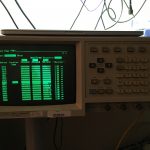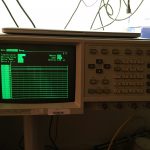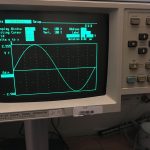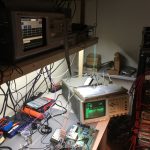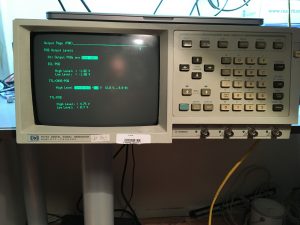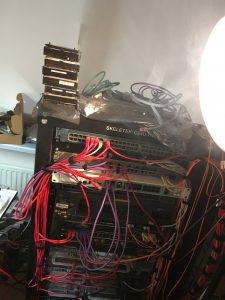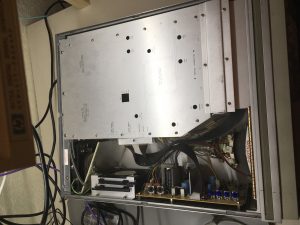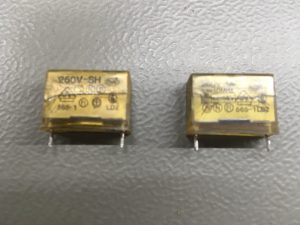My late 2013 Imac needs fixing
I enjoy my Imac (iMac Intel 21.5″ EMC 2638 ) for a several years now. But since a few years disk warrior gives me warnings about “bad blocks”. But my Imac keep working well, knowing it’s kind of a time bomb. Knowing I must or replace the hard drive, or buying a new Imac.
Repairing or but a new one ?
After running for a more then year with a bad hard drive , I noticed my Imac gets slower. The reason for this is, that with every write action, there needs to be a recalculation and reallocation of sectors on the hard drive. So I can no longer postpone the decision of repairing or buying a new Imac.
Repairing a Imac is possible, but it means removing the glass from the aluminum frame . Some models have magnets, and on some Imac models the glass is glued. So repairing or upgrading a Imac is possible, but not an easy task. There is always the possibility of breaking the glass, and that will be costly.
On the other hand: buying a new Imac is very expensive. And to be honest, I don’t think that Apple hardware is getting better. So I don’t feel right about the high prices of Apple hardware. I really believe they are overpriced.
When I take the pragmatic approach, it’s worth taking the risk of opening my Imac, spend a few 100 euro’s on it. And if it all goes wrong, I end up buying a new Imac. Another strong point is: I really like the idea of repairing stuff, then throwing it away. Looking at the specs of my Imac I don’t need a faster CPU. More RAM would be desirable, but for the rest I’m quite happy with it.
So finally I decide to bite the bullet, and repair my Imac, and upgrade it as well. The plans are:
- Swap the existing bad hard drive with a SSD
- Upgrade the 8Gb RAM to 16Gb RAM
By replacing the hard drive with a SSD I gain more speed, since the SSD is way, way faster then the existing 54000 rpm hard drive.
Since I do a lot of 3D printing, I use 3D modeling, and slicing. And I use other tools for designing schematics, and PCB’s. So with some extra RAM my Imac is ready for a couple of years to come.
Repairing my Imac
To repair my Imac I ordered a couple of things:
- The SSD I choose to use is a Samsung 860 EVO 1TB SSD
- The RAM in this Imac model (late 2013) is 2x 8GB (16GB) 1600Mhz DDR3L SO-DIMM
And I used the following tools and guidelines:
- Ifixit cutting tool
- adhesive strips by Ifixit.
- Several different torx bits
- A very small Philips screwdriver.
- I used this Ifixit repair manual to remove the glass: iMac Intel 21.5″ EMC 2638 Hard Drive Replacement
- I used this Ifixit repair manual to upgrade the RAM: iMac Intel 21.5″ EMC 2638 RAM Replacement
To prevent any damage I used a anti-static, ESD safe mat, and ESD wristband.
Replacing the hard drive
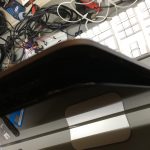
Before I started I was nervous about getting to cut through the adhesive stuff, and removing the glass from the aluminum frame, but after all this was the easiest part. If your ever decide to do this, just take your time, and don’t hurry the process. I saw several YouTube videos’s and some use a hot air gun. I didn’t dare to use my hot air gun, afraid to damage the LCD, or any plastics that my hide under the screen. And with the Ifixit cutting tool, and two thin plastic cards, I got the screen remove in a couple of minutes.
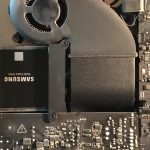
Once I carefully removed the screen, replacing the hard drive with a SSD is just a breeze. The only challenge is getting the short SATA/Power cable to line up. I just unscrew the left speaker, to give me some extra room, and that worked out well. However, as I did find out: when upgrading the RAM, the drive must be removed. So if you’re planning to upgrade the RAM, just start with that, and place the drive as a last step.
Upgrading the RAM
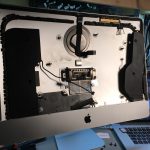
Well as it turns out, replacing the RAM is not for the faint of heart. It’s possible, but you need to take out almost every part. To upgrade the RAM you need to take out the motherboard, since the RAM module are facing to the backside of the Imac casing. And to take out the motherboard, you need to take out:
- The power supply
-
-
-
-
-
-
-
-
- The FAN assembly
- The hard drive
- The hard drive tray
- Unplug the 4 mini coax connectors
-
- Unplug various other little fragile connectors.
-
-
-
-
-
-
-
-
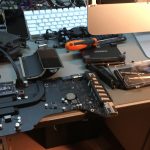
However by following the Ifix manual I mentioned earlier, I manged to upgrade the RAM modules. As by removing the glass, it’s important to take the time, and do it slowly, think about every step. Removing the fragile little connectors gently, don’t force anything.
Conclusion on repairing an Imac
After I took the decision to repair my Imac and performing the repair/upgrade I also had the chance to took a look at the engineering done by Apple. And I must say, that is impressive. A lot of engineering goes into designing a computer which is flat as the Imac. And the whole construction is clean, the cable are routed nicely, all the parts fitting perfectly together.
As with everything, in designing things like this, there are comprises. And one of the comprises is that with this limit space, it’s not easy to design something that is easily serviceable.
I also understand why Apple has service points, and don’t want a consumer to repair/upgrade their products. This means they have to facilitate for complaining consumers which break their product in trying to repair it, which eventually translate in much more expensive products..
And looking back at all the years I used this Imac, without any problem, this repair was worth it. So at the end, putting a little effort into it, and learning from it.. is not that big of a deal. I guess at the end it’s about making the choice of “taking the easy way out” or “willing to put effort into it”.
However, Apple could provide manuals to fix/upgrade their products under a “provided as is basis” and “no warranty blablabla” It would contribute to a product which can be reused, and that at end will make or mother earth much healthier. But I guess as long we want all the latest, fasted bling bling, companies like Apple/Samsung and et rest of it are just facilitating it. In that regard I really like that sites like Ifixit exists 🙂
